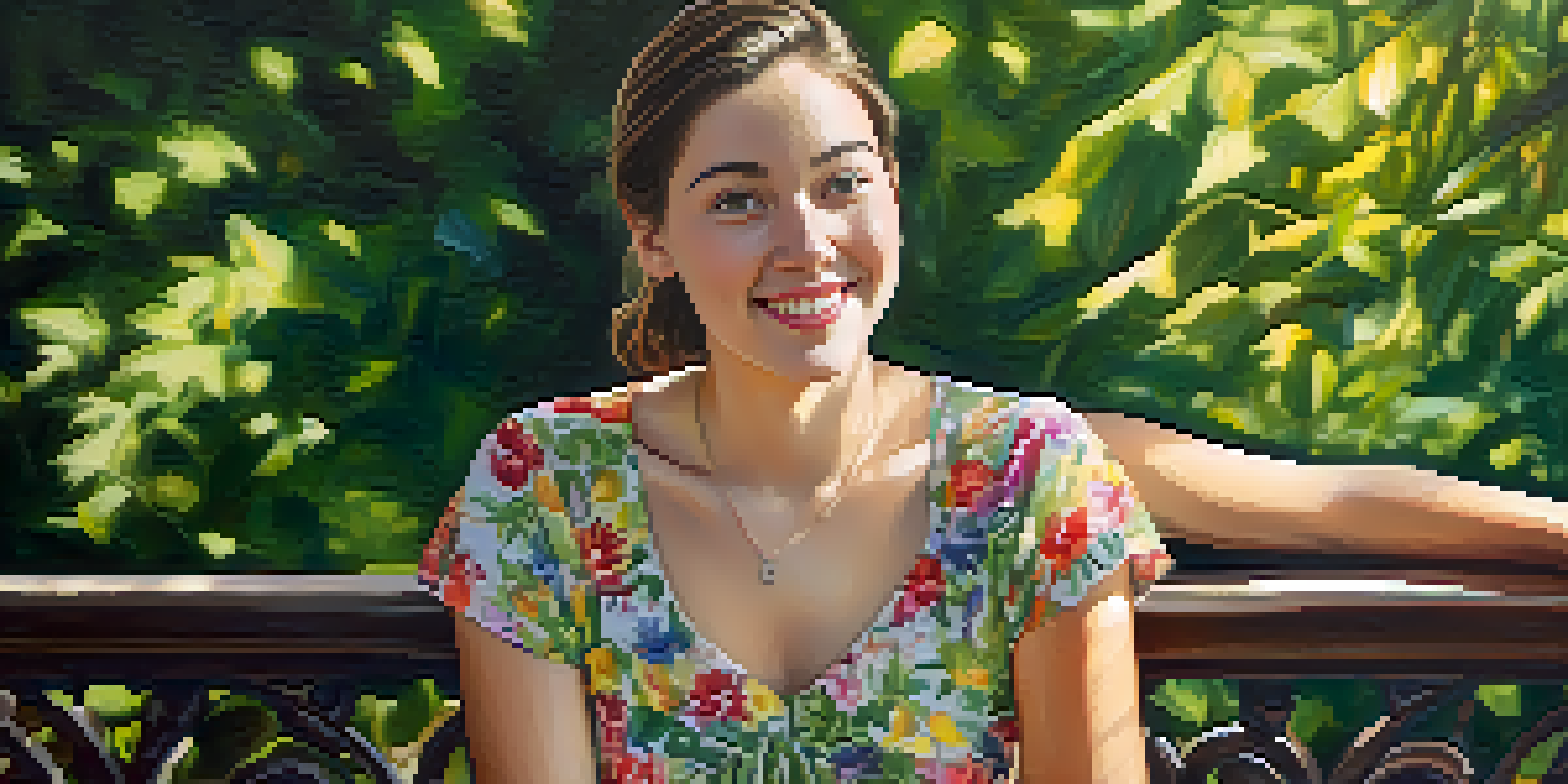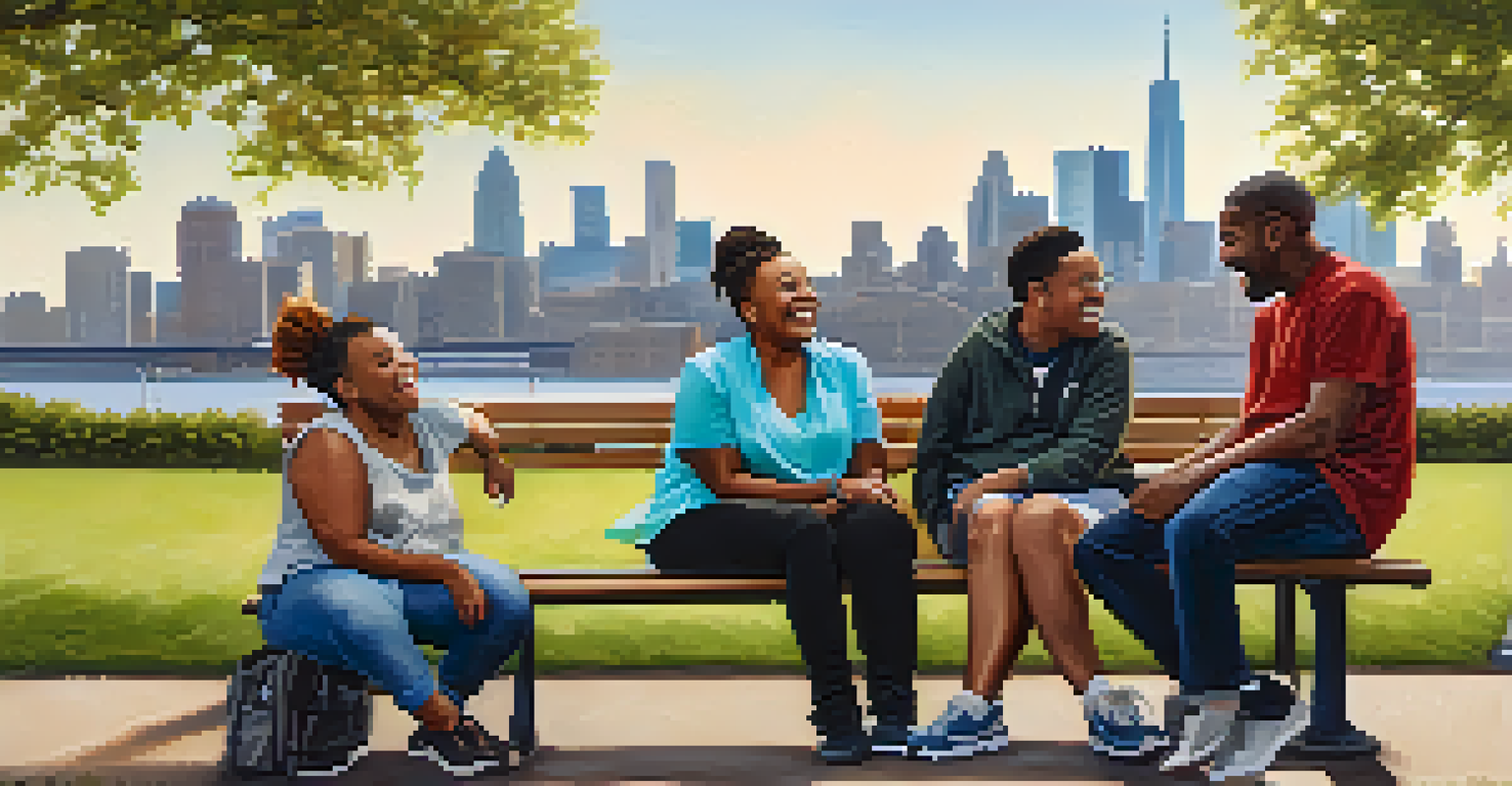The Power of Portraiture: Disability Representation in Art

Understanding Portraiture and Its Significance
Portraiture has long served as a powerful means of communication, capturing the essence of individuals through the artist's lens. It transcends mere likeness, often revealing deeper truths about identity and experience. In this context, portraiture becomes a vital tool for representation, especially for those with disabilities.
Art is not what you see, but what you make others see.
The significance of portraiture lies not only in the act of depicting faces but also in how these images convey stories, emotions, and societal perceptions. Each brushstroke can challenge stereotypes and provoke thought, urging viewers to reconsider their assumptions about disability. As such, portraiture can be a form of advocacy, amplifying voices often sidelined in mainstream narratives.
By capturing the individuality of people with disabilities, artists contribute to a richer, more diverse understanding of humanity. This representation fosters empathy and connection, allowing audiences to engage with experiences that may be vastly different from their own.
Historical Context of Disability Representation in Art
Throughout history, the portrayal of disabled individuals in art has varied greatly, often reflecting societal attitudes of the time. In earlier periods, those with disabilities were frequently depicted in ways that emphasized their differences, sometimes portraying them as objects of curiosity. This can be seen in works from the Renaissance era, where disability was often linked to themes of sin or moral failing.

However, as societal views evolved, so too did the representation of disability in art. The 20th century brought about a shift, with artists beginning to explore more nuanced and empathetic portrayals of disabled individuals. This period marked the emergence of movements that sought to challenge the stigma associated with disability, paving the way for more authentic representations.
Portraiture as Advocacy Tool
Portraiture serves not only to depict individuals but also to challenge stereotypes and amplify marginalized voices, particularly those of disabled individuals.
Today, artists continue to push boundaries, using portraiture to highlight the richness of disabled lives. By incorporating diverse narratives into their work, they help dismantle outdated stereotypes and create a broader understanding of disability in the contemporary world.
The Role of Contemporary Artists in Representation
Contemporary artists are at the forefront of reshaping how disability is represented in portraiture. Many are using their platforms to share personal stories, drawing from their own experiences or those of loved ones. This authenticity can resonate deeply with viewers, creating a sense of connection and understanding that transcends traditional boundaries.
The job of the artist is always to deepen the mystery.
For instance, artists like Frida Kahlo and Chuck Close have utilized their own disabilities as a lens through which to explore identity and resilience. Their works challenge the viewer to see beyond the physical and consider the complexities of life with a disability. By embracing their own narratives, these artists invite others to do the same, fostering a sense of community and shared experience.
Moreover, the rise of social media has empowered artists with disabilities to share their work and perspectives with a global audience. This has led to a richer dialogue around representation, encouraging both artists and viewers to engage with disability in a more meaningful way.
Impact of Portraiture on Disability Awareness
The impact of portraiture on disability awareness cannot be overstated. Art has the power to spark conversations and challenge preconceived notions, ultimately fostering a more inclusive society. Through visual storytelling, artists can highlight the everyday realities of disabled individuals, allowing audiences to confront their biases and assumptions.
For example, a powerful portrait can evoke empathy, encouraging viewers to consider the emotional and physical challenges faced by disabled individuals. By presenting these stories in a relatable way, art can serve as a catalyst for change, prompting discussions around accessibility, representation, and rights.
Historical Shifts in Representation
The portrayal of disability in art has evolved from objectification to more nuanced, empathetic representations, reflecting changing societal attitudes.
As more artists and advocates use portraiture to shed light on disability, the potential for increased awareness and acceptance grows. This artistic approach not only educates but also inspires action, urging society to work towards a more inclusive future.
Challenges Faced in Disability Representation
While strides have been made in disability representation within portraiture, challenges still persist. Many artists encounter difficulties in accessing resources, opportunities, and platforms to showcase their work. This lack of representation can perpetuate stereotypes and limit the diversity of narratives being shared.
Furthermore, the art world itself can sometimes be exclusionary, making it challenging for disabled artists to break through. Issues such as physical accessibility and ableism within artistic communities can hinder opportunities for those who wish to contribute their unique perspectives.
Addressing these challenges requires a concerted effort from both artists and institutions. By prioritizing inclusion and accessibility, the art world can create a more equitable environment that celebrates diverse voices and experiences.
The Importance of Intersectionality in Art
Intersectionality plays a crucial role in understanding the diverse experiences of disabled individuals. This framework acknowledges that disability intersects with other identities, such as race, gender, and socioeconomic status, influencing how people experience the world. Artists who embrace this complexity can create more layered and impactful representations.
For instance, a portrait that highlights not only a person's disability but also their cultural background can provide a richer narrative. This approach allows for a more comprehensive understanding of the individual's lived experiences, moving beyond a one-dimensional portrayal.
Intersectionality Enhances Understanding
Incorporating intersectionality in portraiture enriches narratives by acknowledging how disability intersects with other identities, fostering a deeper understanding of lived experiences.
By incorporating intersectionality into portraiture, artists can challenge societal norms and broaden the conversation around disability. This not only enhances representation but also fosters solidarity among diverse communities, promoting a more inclusive artistic landscape.
Conclusion: The Future of Disability Representation in Portraiture
As we look towards the future, the power of portraiture in disability representation remains a vital conversation. The ongoing efforts of contemporary artists, along with increased awareness of accessibility and inclusion, promise to reshape the narrative surrounding disability. By continuing to celebrate diverse voices and experiences, the art world can foster a more nuanced understanding of what it means to live with a disability.
Moreover, the role of technology and social media in amplifying these narratives cannot be ignored. Platforms that allow artists to share their work and engage with audiences can help bridge gaps and create new opportunities for representation. This democratization of art opens doors for previously marginalized voices.

Ultimately, the future of disability representation in portraiture holds great promise. By embracing the power of art to connect, educate, and inspire, we can move towards a more inclusive society that values and uplifts all individuals, regardless of their abilities.